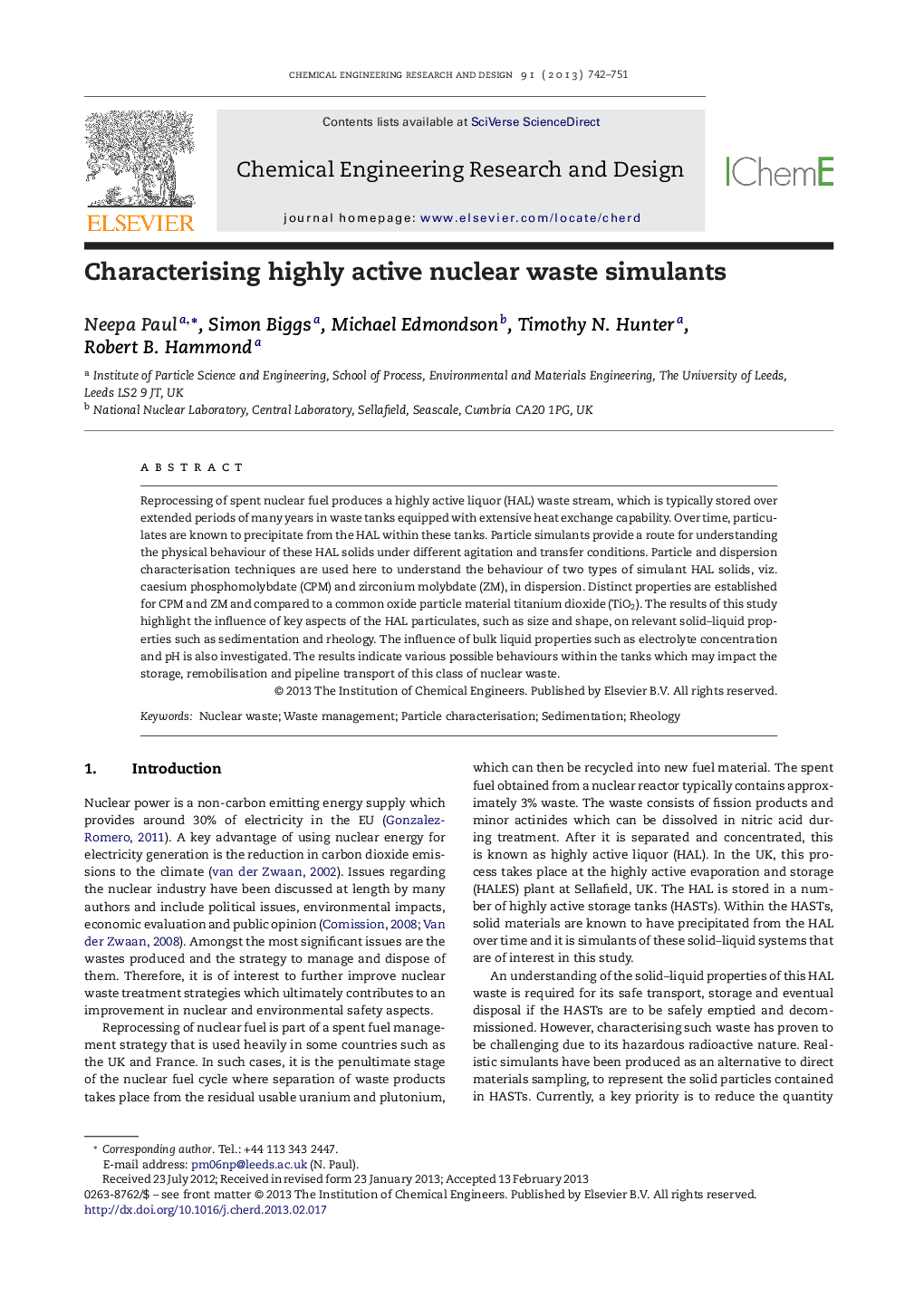| Article ID | Journal | Published Year | Pages | File Type |
|---|---|---|---|---|
| 621255 | Chemical Engineering Research and Design | 2013 | 10 Pages |
Reprocessing of spent nuclear fuel produces a highly active liquor (HAL) waste stream, which is typically stored over extended periods of many years in waste tanks equipped with extensive heat exchange capability. Over time, particulates are known to precipitate from the HAL within these tanks. Particle simulants provide a route for understanding the physical behaviour of these HAL solids under different agitation and transfer conditions. Particle and dispersion characterisation techniques are used here to understand the behaviour of two types of simulant HAL solids, viz. caesium phosphomolybdate (CPM) and zirconium molybdate (ZM), in dispersion. Distinct properties are established for CPM and ZM and compared to a common oxide particle material titanium dioxide (TiO2). The results of this study highlight the influence of key aspects of the HAL particulates, such as size and shape, on relevant solid–liquid properties such as sedimentation and rheology. The influence of bulk liquid properties such as electrolyte concentration and pH is also investigated. The results indicate various possible behaviours within the tanks which may impact the storage, remobilisation and pipeline transport of this class of nuclear waste.
Graphical abstractFigure optionsDownload full-size imageDownload high-quality image (68 K)Download as PowerPoint slideHighlights► Particle characterisation of caesium phosphomolybdate (CPM) and zirconium molybdate (ZM). ► Build-up of internal stress leads to the collapse of the sediment front. ► Hindered settling functions are influenced by size polydisperse ZM suspensions. ► Cubic ZM particles pack in a uniform compact bed upon settling. ► Shear-thinning behaviour is exhibited with an increase in background electrolyte.
